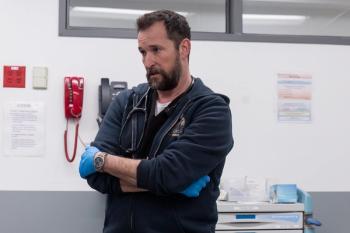
5 Looks at Health Tech's Potential and Limitations
What does it mean when EHRs pose problems and possibilities? Or when a company can improve health but risk privacy?
Health tech is interesting not only for its potential to improve outcomes and save costs, but also for the myriad challenges its solutions pose. Electronic health records (EHRs), for instance, appear to be contradictions capable of improving the health of patients while contributing to physician burnout. It’s with level-headed caution, then, that healthcare leaders must brave medicine’s newest frontiers.
Over the past week, Healthcare Analytics News™ reported and analyzed any number of stories that fit the above description. Our team examined everything from the use of medical scribes in the fight against physician burnout and the artificial intelligence (AI) adoption gap to the use of analytics by payers.
>>
When healthcare executives and forward-thinking clinicians vet new technologies, they must consider the yin and yang — the potential benefits and detriments. Only by doing this can they make the right decisions, buttressed by the right controls to mitigate harm, for their health systems.
Did we miss something? Or do you want to add to the conversation? Reach out to us on
1.
Although the rise of the EHR can help improve patient outcomes, the technology is associated with physician burnout. Long hours spent documenting clinical notes and data entry while the patient is in the room are to blame. But medical scribes — paraprofessionals who handle the documentation burden for physicians — can help. Researchers found that the use of medical scribes slashed physician documentation time, improving doctors’ productivity and job satisfaction. Does this mean medical scribes are here to stay, or are they a temporary fix?
2.
Interoperability is the dream of many in health IT, but few understand how to achieve this state of seamless data sharing. The Fast Healthcare Interoperability Resources (FHIR) standard could be the technical tool that will bridge the information gap. But a challenge remains: Not enough healthcare leaders know of or understand FHIR and how it could improve the field.
3.
In this series premiere, Kevin Campbell, M.D., a Duke-trained cardiologist and CEO of the health data startup PaceMate, presents three news stories and explains how clinicians and executives must team up to overcome the challenges within. His first targets: a hospital consortium-owned drug company, the direct-to-consumer genetic testing company 23andMe and a study about heart failure. What you’ll get here are early steps toward bridging the clinical divide.
4.
As healthcare moves increasingly toward big data and analytics, health insurers are also climbing on board. In fact, Humana, the nation’s fourth largest payer, is busy staffing a new, 40,000-square-foot analytics center in Boston. But what will it do?
5.
Most industries are finding AI adoption and implementation difficult. Still, market forecasts and wide-eyed innovators are confident that AI will revolutionize many a field, including healthcare. The problem is, that shift won’t come until healthcare insiders spur adoption at scale. In this column, a key opinion leader offers paths for health systems to speed toward this goal. But success requires much more than a hunger for short-term profits.
Get the best insights in healthcare analytics
Related





























































































